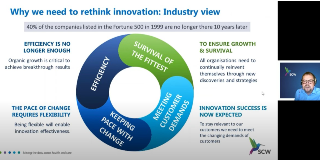“We need to automate”, “We are inefficient”, “Automation will save us time and money”. These are just some of the phrases that are used when organisations investigate automation under growing pressure to do so. People are often surprised, however, when presented with the costs and timescales to design, build and run automations as a scalable supported service at the actual costs of delivering a successful automation.
Isn’t automation cheap?
The general information supporting automation stresses that it is simple to implement, faster than current users undertaking the work, and most importantly low cost. Whilst these things are potentially true, just like any system it still needs staff to support, develop and promote it, and it is here that the costs can start to appear.
The relatively low cost involved to automate a single process for one user has driven the perception that the cost of automation is low. Individuals can create excel workbooks with macros and formulas to speed up their work and can create workflows in automation tools using free or single-user versions of automation software.
When automating your own work, you are the customer, you know all the inputs, outputs and required processing. If the automation breaks you will be an expert in the work and will quickly be able to make any changes needed to get it working again.
Once other users start using your automations, however, they need to be accessible, adapt to different working styles, and accommodate new calculations and processing steps. On top of this, you become responsible for the delivery of another team’s work. That simple automation has become business critical, but only one person knows how it works, it is only on their laptop, and as a business, we have created a risk.
How do we manage this risk?
To mitigate this risk, we start by designing a support wrapper that will enable automation as a service across the business.
- We invest in enterprise licensing to cover our wider use case
- We create a support team to handle user queries, training and investigate any bugs in the process
- We create a team to fix the automation if it breaks, adapt it if the process changes, and create new automations.
- We look to create standards and frameworks to develop an automation Centre of Excellence (CoE)
Suddenly we have a business case that needs a whole new business unit to deliver what was once a simple automation.
The reaction to these projected costs will naturally be to evaluate them against the financial return on investment using the potential time saving of the automation. After all, we originally set up the automation to save us time and money. But this approach is too simplistic. Evaluating automations solely on the staffing cost time they save the business doesn’t factor in the benefit of freeing up staff members to work on new opportunities or the cost of risk in the current process.
Understanding the costs of not automating
Let’s imagine we have a team member that runs customer billing. Every week they spend one hour producing a summary of the accounts and emailing out the invoices to our customers. They do the same task every week and they have become very efficient at doing the work. Over time it has become a repetitive task.
If we look at this activity and the value of automating, we could judge that the potential is one hour’s worth of staffing costs per week. Using this metric, the process would not be automated as the return on investment would be too low.
If we asked, however, how valuable billing our customers is the answer would be high. Currently, we are meeting this high-risk requirement by employing a dedicated and experienced staff member. But the task is now getting repetitive, the team member wants to develop their career and learn new skills. Yes, the task is being covered, but staff satisfaction is starting to diminish and soon we will develop a new risk of staff retention.
Now we must consider the cost if we have to recruit and train a new staff member. In order to keep our high-risk process running at the same level our new staff member will have to be as good as the previous one. And during recruitment and training the invoices still need to be raised and emailed out. The costs of this task have now increased significantly, and it is starting to impact billing customers.
Does this mean we should automate every task?
No. Not all tasks are suited to being automated and we still need to balance the cost of automating a task against the total benefit that the automation brings to the organisation.
For automation to be successful the task must be:
- Repeated
- Stable
- Structured (no more than 20 steps)
- Well-understood (rule-based) and should not involve any subjective decision-making.
The first is obvious. If the task is never going to be repeated, then there is no value in setting up an automation. The second is more nuanced, a task that is prone to changing is not a good candidate, but some small changes can be accommodated albeit at an increased cost. Lastly, any task where we don’t fully understand the process, either because it is unstructured or because the output is based on a subjective user decision, is also a bad candidate for automation. It is likely that either the automation won’t deliver the required functionality, or that the costs will increase as we discover more about the process. Making sure that we choose processes that are repeatable, stable, and well-understood is the key to success.
So, what about the costs of automating?
To balance the costs, we need to understand the time saving from the automation and multiply that by the opportunity/risk identified. By combining these two metrics we get an understanding of the overall potential for automation. One automation is unlikely to ever recuperate the cost of the support team and platform, but it also shouldn’t be required to. The same support team that is needed to support and deliver one automation could support 10, 20, 30 automations all within the same cost envelope. When balancing cost, we need to understand that automations are a capability and that this capability should be built into a library used to support a variety of business needs.
Should I use automation?
Automation offers us the potential to be more efficient, reduce cost, and reduce risk. These are things that all organisations across the NHS need to do. By embracing automation, we can deliver positive change and economies within our own organisation and provide capabilities to support our customers. Reviewing what we do and understanding the risks built into our current processes will help enable us to understand the true value of automation and release the benefits across the NHS.
For more information contact Tom Counsell, Deputy Director of Research and Development,










